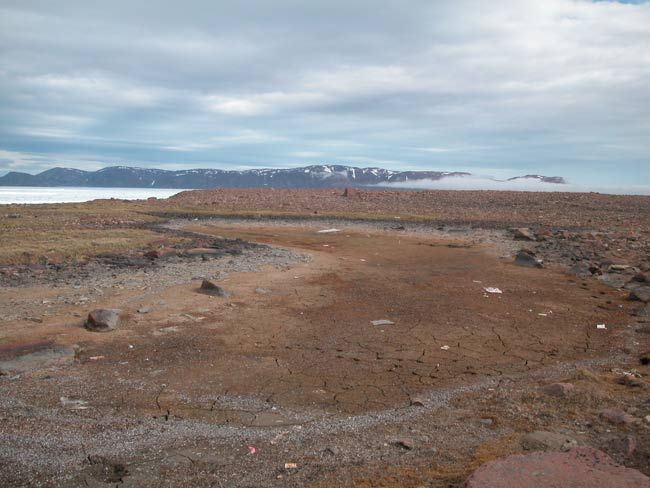Ancient Arctic Ponds Disappearing

Shallow ponds that dot the Arctic landscape and are essential to local wildlife have been drying up due to rising temperatures.
These ponds, many of which have been permanent bodies of water for thousands of years, are particularly vulnerable to climate change because of their low water levels, making them an important indicator.
A two-decade study of the water quality and water level of 40 such ponds indicates lower water levels and changes in water chemistry recorded in the polar summers of recent years are consistent with warmer temperatures in the region and increasing evaporation rates.
In early July 2006, several of the main study ponds dried up completely and the water levels in others decreased dramatically.
“It was quite shocking to see some of our largest study ponds dry up by early summer,” said Marianne Douglas of the University of Alberta in Canada.
A 2005 study found that 125 large lakes in the Arctic region had vanished as rising temperatures melted the ancient permafrost underneath them, draining away the lakes’ water.
The ecological ramifications from the disappearance of the ponds described in the new study could be severe and hit all level of the Arctic ecosystem, Douglas said. Waterfowl live around the ponds and use them for breeding grounds, invertebrate populations depend on them, and animals use them as drinking fountains.
Sign up for the Live Science daily newsletter now
Get the world’s most fascinating discoveries delivered straight to your inbox.
“These surface water ponds are so important because they are often hotpots of biodiversity and production for microorganisms, plants and animals in this otherwise extreme terrestrial environment,” Douglas said.
The new study is detailed in the July 2 issue of Proceedings of the National Academy of Sciences.
- Video: Greatest Warming Seen at High Latitudes
- Top 10 Surprising Results of Global Warming
- 125 Large Northern Lakes Disappear

Andrea Thompson is an associate editor at Scientific American, where she covers sustainability, energy and the environment. Prior to that, she was a senior writer covering climate science at Climate Central and a reporter and editor at Live Science, where she primarily covered Earth science and the environment. She holds a graduate degree in science health and environmental reporting from New York University, as well as a bachelor of science and and masters of science in atmospheric chemistry from the Georgia Institute of Technology.











